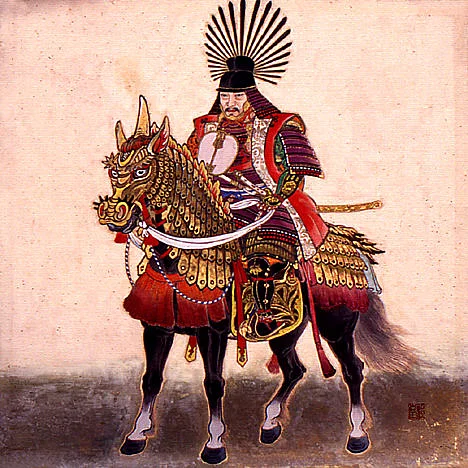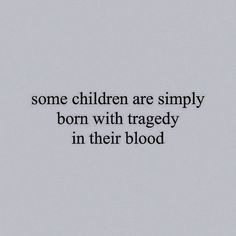#develop the excelled virtues
Explore tagged Tumblr posts
Text
Develop the Virtues in Divine Life to Grow unto Maturity & Enter the Eternal Kingdom
We believers in Christ need to develop the spiritual virtues in the divine life and thus to advance in the growth of the divine life so that we make God’s calling and selection of us firm and so that we may have a rich entrance into the eternal kingdom. Amen! This week we have been enjoying the matter of being partakers of the divine nature and having the development of the divine life and the…
#1211#1299#2024 Thanksgiving Conference#2024TGCw5d6#56#6#a rich entrance#develop the excelled virtues#development of the divine life#God&039;s calling and selection#grow in life unto maturity#growth and maturity in life#holy word for morning revival#Ron Kangas#the eternal kingdom of our Lord#Witness Lee
0 notes
Note
talking about the AI debate there's a sincaraz author that's recently admitted to using AI for their fics, i really fear that if the ship gets super popular we're going to be seeing more of this and it'll become a a content slop like the lestappen tag
I've seen this discussion in the tag and avoided it for the most part because I never really read those fics since they're not my personal taste and a couple of things weren't personally for me. AI has no place in fandom but a part of me is glad the author recognised that what they're doing isn't good for the ecosystem and I hope they take some time out and rediscover fandom and being creative with writing! Writing is an awful awful hobby (source: it's my favourite hobby ever) which can feel slow and isolationist (I've been working on the same fic for a week and I only have like 2.5k words, the urge to post something for quick validation is overwhelming sometimes, especially with the dopamine flood we often immerse ourselves in!) but slowly working away on something with your own brain and flow can be so rewarding. It was right for them to take their fics down but I hope they return to writing and discover the joy of community being part of the writing process as well as a source of validation, rather than the loneliness of an LLM (which will always just tell you what you want to hear).
#asks#ai in fandom#sincaraz#i think self awareness and accountability is excellent and how we prevent the content slop becoming a thing#i also think when people have taken that accountability they shouldn't then be witch hunted - which is NOT what i'm seeing btw.#i think they should be welcomed back and ask for the writing support they obviously want and be given it! by virtue of being a community#it's very easy for me to pass judgement when my entire education was done prior to chatgpt. im aware there are people younger than me who#are letting that vital muscle of being able to write concisely and coherently atrophy and never fully develop#bc we live in a Society where time is money and LLM use is quickly approaching universal#which is why fandom needs to stay free of it. this is brain training as much as anything else. we are lucky to have community as support
14 notes
·
View notes
Text
The Art of Excellence: A Philosophical Journey
_By Plato_ In the bustling agora of ancient Athens, a city renowned for its wisdom and intellectual vigor, I, Plato, have devoted my life to the pursuit of knowledge and the exploration of virtue. It is within these hallowed grounds of philosophical discourse that I ponder upon the essence of excellence, a concept often misunderstood and misrepresented in our quest for a virtuous…
#Ancient Greece#Arete#Education#Excellence#Greek Philosophy#Metaphysics#Personal Development#Philosophy#Plato#Rationality#Self-Improvement#Soul#Virtue#Virtuous Living#Wisdom
0 notes
Text
Principles So That ‘NOTHING Can AFFECT YOU’
https://www.stayingalive.in/cataloguing-strategic-innov/principles-so-that-nothing.html Discover the timeless Stoic principles that empower you to remain unaffected by life’s challenges. Embrace resilience and inner peace with these practical teachings. Embrace the Power of Stoicism In a world full of uncertainties and challenges, the ancient philosophy of Stoicism offers timeless wisdom to…
#Ancient Philosophy#Emotional Strength#gratitude#impermanence#Inner Peace#Life Challenges#Mental Resilience#mindfulness#Mindset#Moral Excellence#Negative Visualization#News#Optimism#Personal Development#Personal Growth#Present Moment#resilience#Sanjay Kumar Mohindroo#Sanjay Mohindroo#Self-Reflection#Stoic Principles#Stoicism#Virtue
0 notes
Text
Survey: Who is your favorite feminist revolutionary of the frev (or at least someone who contributed to women's rights)?
In this survey, I have deliberately chosen a representative from each different faction.
On the Girondist side: Marquis de Condorcet The revolutionary who campaigned for gender equality, one of the few in his era. He is impossible not to mention in this discussion.

On the Dantonist side: Camille Desmoulins He advocated for the rights of married women to administer their property in 1793. In issue 14 of his journal Révolutions de France et de Brabant, he speaks highly of Théroigne de Méricourt and writes the following passage: "At the request of Mademoiselle Théroigne to be admitted to the district with a vote of consent, the assembly followed the president’s conclusions, thanking this excellent citizen for her motion; a canon from the Council of Mâcon having formally recognized that women have a soul and reason like men, they cannot be forbidden from making as good use of them as the speaker did; he will always make Mademoiselle Théroigne, and all women of her sex, free to propose what they believe to be advantageous to the homeland."

For the Maratist group: Jean-Paul Marat The journalist from L’Ami du Peuple often defended women who were victims of domestic violence, encouraging them to flee their homes and denounce those who abused them. Here is an excerpt from his writings found in the excellent book Madame Marat: A Heroic Life in the Turmoil of the French Revolution by Stefania di Pasquale: "Women are more inclined to tenderness than men. During their childhood, children are expected to oppose themselves to shame, but as soon as they come to the age in which women start listening to us, we hurry to conquer them and to excite their imagination; we focus all of our thoughts to unleash their senses. Hasn’t the time come to create a sweet bond with them? Men have always chosen while women have always accepted! How many foolish parents sacrifice the happiness of their daughters? Forced to yield the object of their heart forever, they become unable to love again, seeing only misfortune in their future." He also defended prostitutes.

For the Cretois group: Charles-Gilbert Romme The revolutionary mathematician, founder of the revolutionary calendar, also worked for certain women's rights. He founded a mixed club with Théroigne de Méricourt, and in a report on public education dated December 20, 1792, he advocated for girls to have access to republican schools. He made the following remark: "They should not be strangers to social virtues, since, in addition to needing them for themselves, they can develop or strengthen them in the hearts of men. If, in the natural and social order, man is called to execute and act, woman, by an imperious and necessary influence, is called to give the will a stronger and more vehement impulse." Although Romme’s feminism had limits, as seen in his statement: "The secondary schools in question are not for both sexes."

For the Robespierristes group: Georges Couthon One of the best-known members of the CPS in Year II, also spoke in favor of women's rights to share property administration in August 1793, as seen here: source. Additionally, he allowed his wife to give a speech at the Federation Festival in Clermont-Ferrand in 1790, before he gave his own speech, as seen here: source.

For the Enragés group: Jacques Roux Here is an excerpt from Markov Walter on this Enragés leader: "All the revolutionary parties tried to involve women, while, with the exception of the Enragés, they sought to exclude them from any real political activity. Jacques Roux considered them the decisive reserve of the Revolution. 'Victory was indisputable as soon as women joined the sans-culottes.'"

For the Hébertist group: Jean-Nicolas Pache This former Girondin minister of the War , who became an Hébertist and later Mayor of Paris, founded the Société patriotique du Luxembourg club, which, according to Louis Devance, "admitted women from the age of fourteen, with the same formalities as men, but their numbers could not exceed one-fifth of the total members; they were eligible for the same positions in the society, excluding the office roles."

For the Babouvist group: Gracchus Babeuf Babeuf wrote a letter in favor of gender equality to Dubois de Fosseux in 1786, as seen here: source. He supported the full participation of women in political clubs and paid tribute to the women of the French Revolution in his journal article: "Women dedicate their entire days to prevent us from starving," and said of them, "But beware, women, whom we have degraded, without whom, however, and without their courage on the 5th and 6th of October, we might not have had freedom!" He even remarked to one of his colleagues: "The advice you give us regarding the role women can play is sensible and judicious; we will take advantage of it. We know the influence that this fascinating sex can have, who, like us, cannot endure the yoke of tyranny and who are no less courageous when it comes to breaking it." He believed that the homeland had everything to gain from exploiting women’s talents in politics.

For the Thermidorian group: Armand Benoît Joseph Guffroy When he is not making false accusations against Élisabeth Le Bas or showing appalling behavior by kicking his former collaborator Marie-Anne Babeuf out after a violent argument, or writing poorly about Lucile Desmoulins and Marie-Françoise Hébert(euphemism) , one can find some quality in Guffroy's progressive views on women's rights. He wrote: "I had proposed to admit women to the primary assemblies, to deliberate on the choice of municipalities, and I still believe that my two separate ballots and my posted ballots would disturb all the conspiracies. If one is wise, one will come back to it; and I predict that we will never have a public spirit, public morals, if women do not participate in the administration as I have proposed. The National Assembly admitted to swearing the constitution, those who were in the tribune on the 4th of this month. Why would we separate them from the public good? The queen promised to raise her son in the principles of constitutional liberty; all French mothers must publicly swear this civic oath: without that, I repeat, no morals, no morals, no fatherland. Frenchmen, prove that you are men, by giving back to your wives all their dignity; French women, prove that you are worthy of giving birth to a race of free men."
Sources:
Antoine Resche
Louis Devance Le féminisme pendant la révolution française
Walter Markov
Stefania di Pasquale
Jean-Marc Schiappa
Charles-Gilbert Romme, "Rapport sur l’instruction publique, considéré dans son ensemble, suivi d’un projet de décret sur les principales bases du plan général, prononcé devant la Convention le 20 décembre 1792"
Thank you @anotherhumaninthisworld without whom I would not have been able to see the writings of Couthon, Guffroy, and Desmoulins in favor of women's rights.
#frev#french revolution#condorcet#camille desmoulins#jean paul marat#charles gilbert romme#Jacques Roux#Jean-Nicolas Pache#gracchus babeuf#Guffroy#It was difficult to find a somewhat more reasonable figure for the Hébertists in terms of women's rights#as the focus on women's rights was so limited.#Even more for the Thermidorians as we know what happen to the womens who were driven from the assembly with whips#but we can at least give this quality to Guffroy#My goal was at least one representative from each faction#It seemed more fair and “fun” to me.
109 notes
·
View notes
Text
I NEED A YANDERE SHADOW MILK COOKIE VS PURE VANILLA COOKIE AU BUT MAKE IT A TRAGIC SOAP OPERA MUSICAL AU!!!
Tragic soulmates who are fated for each other but because Shadow Milk AND Pure Vanilla share a soul jam they have the same soulmate, both absolutely obsessed with her!!
I already made the comparisons to Pure Vanilla struggling with his obsession and his devotion making him feel justified in what he's doing to 'keep her safe' in his mind when they first meet and Y/n only just starts catching on to his obsession. Pure Vanilla NEEDS to sing a Cookie Run version of Hellfire by Disney.
youtube
Shadow Milk Cookie is meanwhile only able to watch from the sidelines inside the tree as he spies on both PV and their(HIS!!!) beloved become an item with him both seething, scheming, and starting to madly fall in love with her. Bernadette by Iamx would be an excellent song for him to sing as he delusionally plays with a plush of both Y/n and himself in the tree while he waits for freedom imagining their lives together once he gets out-
youtube
Meanwhile Pure Vanilla finally accepts his feelings and thinks they're truly alright since all he wants in the end is to love and take care of them BUT THIS IS WHERE THE FIRST CLIMAX STRIKES!! He proposes to her and Love Story by Taylor Swift(DARK VERSION) goes well with this scene-
youtube
However he's not able to get a yes or no out of the scared Y/n before he's summoned to help white Lily Cookie and the whole beasts gets released thing happens. During that time SMC ends up successfully steal away the terrified Yn away proclaiming his love to her and freaking her MORE out considering SMC's tendency to turn people's into puppets n things. Most of the og storyline plays out cuz PV doesn't know that SMC stole Y/n yet and he assumes she's still awaiting him at home or ran away. He desperately wants to see/find her but he's forced to do his duty first.
Meanwhile SMC is keeping her pretty much hostage trying to deceit her into loving him by reminding her how bad it was when she was with PV and how SO MUCH BETTER HE IS!! Powerful, can get her anything she desires, can keep her safe from everyone else, and don't forget he's charming and handsome. Yn starts developing feelings for BOTH of them. Judas by Lady Gaga is a good song Yn could do for this torturous few months she spends with him struggling with her virtue to Pure Vanilla but SMC being the beast she clings to.
youtube
Ultimately while PV is starting to snap out of being Truthless Recluse SMC is presenting his defeat to YN on a silver platter but instead of flattered she's HORRIFIED by what he can do and realizes she doesn't want to be with either of them. Cue a scary semi scary chase scene through the spire as a version of Meant To Be Yours from Heathers the Musical is being spewed from his mouth.
youtube
Instead of Veronica he's begging Y/n opening the door and busts it down just as Awakened PV n Gang shows up. I NEED THESE TWO TO DUKE IT OUT TO A COOKIE RUN/YANDERE VERSION OF EL TANGO DE ROXANNE BY MOULIN ROUGE!!!
youtube
During the fight SMC is defeated and gets away but so does Y/n whom slips away while they weren't looking and runs away from Yeast Beast Continent. Where they go and what they do is unknown but both are desperately searching for her never to find her again.
#Cookie Run#cookie run au#Yandere Shadow Milk Cookie#Yandere Pure Vanilla Cookie#yandere pure vanilla#Shadow Milk Cookie x Reader#Shadow Milk Cookie#pure vanilla cookie#Pure Vanilla Cookie x Reader
97 notes
·
View notes
Text
Toilet Bound Hanako-kun Hanakotoba Analysis

While it might seem surprising that it's taken me this long to cover TBHK—given my adoration of the series and its abundance of flower symbolism—what delayed me was mainly the lack of clarity as to which flowers represented which characters and scenes. This is mostly because multiple characters have been depicted with the same flowers while some characters have been depicted with multiple flowers. I went off of flowers I've seen in the anime and any official artwork I managed to find since it's been a while since I read the manga. In any case, I tried my best...
═══════════════════════
-> 1) Camellia (Camellia japonica)



-> 1.1) Flower Symbolism:
In Japan, camellias are called tsubaki (椿). They are associated with modest kindness, pride, eternal love and enduring love in hanakotoba. Red camellias in particular symbolise love, humble virtue, modest splendour, unpretentious grace and "perishing with grace" in hanakotoba. Pink camellias represent love, modesty, beauty, longing and missing someone. On the other hand, white camellias symbolise waiting, impeccable charm complete beauty and supreme loveliness. Camellias are also associated with everlasting love, marital bliss and perfect unions between lovers because, unlike most other flowers, the calyx and petals of a camellia flower don't separate when its flower wilts. In Western floriography, camellias are associated with constancy, steadfastness, perfect loveliness, unpretending excellence, adoration, longing, admiration and perfection. Red camellias in particular are associated with passion, love and desire.
-> 1.2) Discussion of symbolism:
The most prevalent flower depicted in the TBHK anime and manga series—as well as in its official artwork—is the red camellia. A silhouette of a camellia flower is even incorporated into the series' logo. In the series, camellias are often associated with its titular protagonist, Hanako—but are also occasionally associated with Nene Yashiro and Tsukasa Yugi. Despite being closed off and often smiling to mask his emotions, Hanako cares greatly for those close to him, which ties into the camellia's symbolism of modest kindness. Over the course of the series, Hanako and Nene have come to care a great deal for one another with the former going so far as to uproot the lives of others and sacrifice his own existence to save her. This ties into the camellia's symbolism of enduring love, adoration, longing, passion and perishing with grace. Meanwhile, Nene goes so far as to change the timeline so she can see him again. This ties into the camellia's association with steadfastness, longing, passion, adoration and enduring love. Nene's innate kindness and naivety as well as her development throughout the series from an insecure, hopeless romantic to someone more assured and determined greatly complements the flower's symbolism of loveliness, charm, modesty and beauty.
━━━━━━━━━━━━━━━━
-> 2) Hollyhock (Alcea rosea)


-> 2.1) Flower symbolism:
In Japan, hollyhock flowers are called tachiaoi (タチアオイ) and symbolise ambition, abundance as well as noble and majestic beauty in hanakotoba. Pink hollyhocks in particular symbolise benevolence and gentleness while red ones symbolise love. In Western floriography, hollyhocks are associated with ambition and fruitfulness. Pink hollyhocks represent innocence, youthfulness, gentleness and grace while red ones symbolise passion, love, strength, resilience and courage.
-> 2.2) Discussion of symbolism:
In the series' first episode, hollyhock flowers are seen growing in the garden that Nene tends to as she talks to Hanako. They are also pictured in the opening theme of the second season alongside Aoi Akane. Hollyhock flowers have also been depicted in official artwork alongside Nene and Hanako. The hollyhock flower's symbolism of strength, resilience, courage, and love complement the trials and tribulations Nene and Hanako have gone through for one another. While the flower's symbolism of benevolence, ambition, gentleness, youthfulness, resilience, passion and love strongly complement Nene's character. Although she isn't depicted with hollyhock flowers as often as HanaNene are, the kanji of Aoi's name (葵) translates to hollyhock. The hollyhock flower's symbolism of grace, passion, love, beauty, benevolence and gentleness complement her outward-facing personality.
━━━━━━━━━━━━━━━━
-> 3) Bellflower (Campanula sp.)


The flowers depicted in this artwork of Hanako and Nene Yashiro are bellflowers. Although the exact species depicted is unclear, the closest resemblance is the Korean bellflower (Campanula takesimana).
-> 3.1) Flower symbolism:
In Japan, bellflowers are called berufurawā (ベルフラワー) and represent humility, gratitude, sincerity and an unchanging heart in hanakotoba. The bellflower's association with humility is derived from its downfacing flowers. In Western floriography, bellflowers symbolise humility, constancy, sincerity, gratitude and unwavering love.
-> 3.2) Discussion of symbolism:
Pinkish-purple bellflowers are featured alongside Nene Yashiro and Hanako in the release notice and cover artwork of chapter 116 of the manga. The bellflower's associations with gratitude, sincerity, constancy, unwavering love and an unchanging heart greatly complement Hanako and Nene's feelings for one another.
━━━━━━━━━━━━━━━━
-> 4) Daffodil (Narcissus sp.) & Marigold (Tagetes sp.)


-> 4.1.) Flower symbolism:
-> 4.1.1) Daffodil Flower Symbolism:
In Japan, daffodils are known as suisen (水仙). They are associated with conceitedness, self-love, respect, regard and unrequited love in hanakotoba. Yellow daffodils in particular symbolise "come back to me" and "I want you to love me again". In Western floriography, daffodils symbolise egoism, self-love, respect, chivalry, unrequited love, evanescent happiness and deceitful hopes.
-> 4.1.2) Marigold Flower Symbolism:
In Japan, marigold flowers are called marīgōrudo (マリーゴールド). They represent jealousy, despair and sadness in hanakotoba. In Western floriography, marigolds symbolise jealousy, despair, cruelty, pain, pessimism and grief.
-> 4.2) Discussion of symbolism:
Daffodils and marigolds are featured on the cover of volume 15 of the cover as well as on the above official art of Hanako. Although the main trio is featured on the cover of volume 15 given the solo artwork of Hanako, it's a reasonable assumption that he is the one canonically linked with these flowers. A single daffodil is also featured on the cover of volume 0 alongside Hanako. Both daffodils and marigolds have negative connotations in flower language contrary to their bright and pretty appearance. This is somewhat reminiscent of how Hanako hides his true emotions and inner turmoil behind a mask of cheerful mischievousness and hides how closed off he is emotionally with Nene with how physically affectionate he is with her. Added to this, the marigold's symbolism of jealousy, despair and grief as well as the daffodil's symbolism of regard, egoism, deceitful hopes complement his character. Furthermore, the daffodil's symbolism of "come back to me" and "I want you to love me again" greatly resonates with Nene's feelings towards Hanako in the current arc of the manga.
━━━━━━━━━━━━━━━━
-> 5) Sunflower (Helianthus sp.) & White Lily (Lilium candidum) & Tiger Lily (Lilium lancifolium)


-> 5.1) Flower Symbolism:
-> 5.1.1) Sunflower Flower Symbolism:
In Japan, sunflowers are called himawari (ひまわり). In hanakotoba, they represent longing, adoration, aspiration and "I look only at you", longing, adoration". In Western floriography, sunflowers symbolise adoration, good luck, resilience, happiness, optimism, warmth, longevity and false riches. Sunflowers are also a representation of unconditional love, devotion and loyalty.
-> 5.1.2) White Lily Flower Symbolism:
In Japan, white lilies are called shirayuri (白百合). They symbolise purity, chastity, innocence and dignity in hanakotoba. In Western floriography, they symbolise affection, majesty, purity, sweetness and refined beauty. They are also associated with faith, rebirth and commitment. White lilies are often used at weddings due to their association with purity, commitment, and love. However, because of their association with purity, white lilies are often used at funerals and are thus also perceived as a symbol of grief and mourning. This established association of death with purity suggests that the departed spirit is pure, virtuous, and innocent, conveying sincere sentiments of hope and mercy beyond death.
-> 5.1.3) Tiger Lily Flower Symbolism:
In Japan, orange lilies symbolise brilliance and humour. In hanakotoba, Tiger lilies—which are called oniyuri (鬼百合)—represent pride, wisdom as well as wealth. In Western floriography, tiger lilies are associated with compassion, charity, wealth, humble pride, passion, mercy, confidence, positivity, prosperity and protection.
-> 5.2) Discussion of symbolism:
Tiger lilies and white lilies are featured on the volume 0 cover of the manga alongside Hanako. While sunflowers are depicted alongside Hanako on the cover of AidaIro's art collection. The sunflower's symbolism of adoration, longing, devotion, loyalty, unconditional love and "I only look at you" resonates with Hanako's feelings towards Nene. The sunflower's association with longevity and good fortune is reminiscent of Hanako's desire for Nene to live a good and long life. Given its association with positivity and happiness, the sunflower in the artwork could be a symbolic representation of Nene and how he longs for her and wants to protect her rather than just a figurative representation of his feelings towards her. The white lilies on the cover of volume 0 could be a representation of Hanako's purity and innocence during his human life as Amane Yugi. The white lilies' association with grief and mourning could infer that he mourns the loss of his innocence and purity. Conversely, the white lilies depicted could represent Nene while the tiger lilies represent Kou Minamoto—along with the daffodil representing Hanako. Each flower's symbolism complements their respective character, supporting this theory. With the white lily's association with purity, innocence, sweetness and beauty complementing Nene. While the tiger lily's symbolism of confidence, passion, positivity, charity, mercy, compassion and protection complements Kou.
━━━━━━━━━━━━━━━━
-> 6) Baby Blue Eyes (Nemophila sp.) & Lotus (Nelumbo nucifera)


-> 6.1) Flower Symbolism:
-> 6.1.1) Baby Blue Eye Flower Symbolism:
Baby Blue Eye flowers are known as Rurikarakusa (ルリカラクサ) in Japan. In hanakotoba, they symbolise success everywhere, daintiness and forgiveness. In Western floriography, they are associated with victory, prosperity, tenderness, sensitivity, harmony and trust. They also represent the transient nature of beauty and life, encouraging us to treasure every moment and appreciate simplicity.
-> 6.1.2) Lotus Flower Symbolism:
In Japan, lotuses are called ren (蓮) or hasu (はす). In hanakotoba, they symbolise eloquence, detached love, sacredness, and a pure heart. They are also associated with rebirth, purity, transformation, renewal, spiritual enlightenment and resurrection as well as beauty, grace and perfection. In Western floriography, lotuses symbolize purity of the heart, virtue, innocence, achieving great things, beauty rising from humble beginnings and bringing together separate things. Lotuses also symbolize estranged love and eloquence. Pink lotuses in particular are often associated with feelings of admiration.
-> 6.2) Discussion of symbolism:
Pink lotuses are depicted alongside Nene and Aoi on the cover of volume 13 of the manga. While the blue flowers depicted around Nene and Aoi on the artwork commemorating the release of chapter 60 are likely Baby Blue Eye (Nemophila) flowers. The lotus' representation of purity, enlightenment, innocence, virtue and sacredness is symbolic of both Nene and Aoi's roles as kannagi—ritual sacrifices to appease the gods and separate the far and near shores. The lotus' symbolism of perfection, beauty, grace and eloquence is reminiscent of how others perceive Aoi. Meanwhile, its symbolism of detached or estranged love is more reminiscent of her real personality and her feelings of resentment and bitterness at having to constantly pretend. The lotus' symbolism of a pure heart, admiration, "beauty rising from humble beginnings" and "bringing together separate things" complements Nene's character. The Nemophila's symbolism of harmony, trust, tenderness, sensitivity, forgiveness, success and treasuring simplicity complements Nene and Aoi's friendship and reinforces how all the tribulations they go through together strengthen their bond.
━━━━━━━━━━━━━━━━
-> 7) White Violet (Viola mandshurica) & White Daisy (Bellis perennis)


->7.1) Flower Symbolism:
->7.1.1) White Violet Flower Symbolism:
Violet flowers are called sumire (菫) in Japan. In hanakotoba, they represent humility, sincerity and small happiness. White violets in particular symbolise purity, candor and innocent love. In Western floriography, violets symbolise modesty and faithfulness. White violets in particular symbolise faithfulness, loyalty, modesty, innocence and purity.
-> 7.1.2) White Daisy Flower Symbolism:
In Japan. daisies are called hinagiku (雛菊). They represent purity, beauty, peace, innocence and hope in hanakotoba. In Western floriography, daisies symbolise purity, innocence, new beginnings and beauty.
-> 7.2) Discussion of symbolism:
On volume 18's fifth publication notice artwork, Sumire Akane is depicted alongside white daisies. While on the release artwork of chapter 89, she is depicted alongside white violets. Sumire's name (スミレ) means violet in Japanese making it a fitting choice for this artwork. The violet's association with modesty, innocence, purity, humility and sincerity plays into Sumire's youthful, nurturing and cheerful outward-facing persona. The artwork depicts her gently holding a white rabbit complementing this notion. The daisy's symbolism of peace, purity, innocence, beauty and hope further accentuates this. Although neither flower's symbolism hints at her underlying sadistic and manipulative side, her smile in each artwork is somewhat too saccharine. Both flowers' association with purity and innocence is symbolic of her role as a kannagi.
═══════════════════════

╰➤ Other anime & donghua hanakotoba posts
#tbhk#jshk#hananene#tbhk hanakotoba#anime hanakotoba#hanakotoba#floriography#tbhk season 2#jshk season 2#tbhk manga#jshk manga#hanako x nene#toilet bound hanako kun#jibaku shounen hanako kun#tbhk hanako#jshk hanako#yashiro nene#minamoto kou#aoi akane#akane aoi#nene yashiro#kou minamoto#amane yugi#sumire akane#akane sumire#tbhk nene#hanako x yashiro#anime#manga#anime analysis
108 notes
·
View notes
Text
Rambling About C# Being Alright
I think C# is an alright language. This is one of the highest distinctions I can give to a language.
Warning: This post is verbose and rambly and probably only good at telling you why someone might like C# and not much else.
~~~
There's something I hate about every other language. Worst, there's things I hate about other languages that I know will never get better. Even worse, some of those things ALSO feel like unforced errors.
With C# there's a few things I dislike or that are missing. C#'s feature set does not obviously excel at anything, but it avoids making any huge misstep in things I care about. Nothing in C# makes me feel like the language designer has personally harmed me.
C# is a very tolerable language.
C# is multi-paradigm.
C# is the Full Middle Malcomist language.
C# will try to not hurt you.
A good way to describe C# is "what if Java sucked less". This, of course, already sounds unappealing to many, but that's alright. I'm not trying to gas it up too much here.
C# has sins, but let's try to put them into some context here and perhaps the reason why I'm posting will become more obvious:
C# didn't try to avoid generics and then implement them in a way that is very limiting (cough Go).
C# doesn't hamstring your ability to have statement lambdas because the language designer dislikes them and also because the language designer decided to have semantic whitespace making statement lambdas harder to deal with (cough Python).
C# doesn't require you to explicitly wrap value types into reference types so you can put value types into collections (cough Java).
C# doesn't ruin your ability to interact with memory efficiently because it forbids you from creating custom value types, ergo everything goes to the heap (cough cough Java, Minecraft).
C# doesn't have insane implicit type coercions that have become the subject of language design comedy (cough JavaScript).
C# doesn't keep privacy accessors as a suggestion and has the developers pinkie swear about it instead of actually enforcing it (cough cough Python).
Plainly put, a lot of the time I find C# to be alright by process of elimination. I'm not trying to shit on your favorite language. Everyone has different things they find tolerable. I have the Buddha nature so I wish for all things to find their tolerable language.
I do also think that C# is notable for being a mainstream language (aka not Haskell) that has a smaller amount of egregious mistakes, quirks and Faustian bargains.
The Typerrrrr
C# is statically typed, but the typing is largely effortless to navigate unlike something like Rust, and the GC gives a greater degree of safety than something like C++.
Of course, the typing being easy to work it also makes it less safe than Rust. But this is an appropriate trade-off for certain kinds of applications, especially considering that C# is memory safe by virtue of running on a VM. Don't come at me, I'm a Rust respecter!!
You know how some people talk about Python being amazing for prototyping? That's how I feel about C#. No matter how much time I would dedicate to Python, C# would still be a more productive language for me. The type system would genuinely make me faster for the vast majority of cases. Of course Python has gradual typing now, so any comparison gets more difficult when you consider that. But what I'm trying to say is that I never understood the idea that doing away entirely with static typing is good for fast iteration.
Also yes, C# can be used as a repl. Leave me alone with your repls. Also, while the debugger is active you can also evaluate arbitrary code within the current scope.
I think that going full dynamic typing is a mistake in almost every situation. The fact that C# doesn't do that already puts it above other languages for me. This stance on typing is controversial, but it's my opinion that is really shouldn't be. And the wind has constantly been blowing towards adding gradual typing to dynamic languages.
The modest typing capabilities C# coupled with OOP and inheritance lets you create pretty awful OOP slop. But that's whatever. At work we use inheritance in very few places where it results in neat code reuse, and then it's just mostly interfaces getting implemented.
C#'s typing and generic system is powerful enough to offer you a plethora of super-ergonomic collection transformation methods via the LINQ library. There's a lot of functional-style programming you can do with that. You know, map, filter, reduce, that stuff?
Even if you make a completely new collection type, if it implements IEnumerable<T> it will benefit from LINQ automatically. Every language these days has something like this, but it's so ridiculously easy to use in C#. Coupled with how C# lets you (1) easily define immutable data types, (2) explicitly control access to struct or class members, (3) do pattern matching, you can end up with code that flows really well.
A Friendly Kitchen Sink
Some people have described C#'s feature set as bloated. It is getting some syntactic diversity which makes it a bit harder to read someone else's code. But it doesn't make C# harder to learn, since it takes roughly the same amount of effort to get to a point where you can be effective in it.
Most of the more specific features can be effortlessly ignored. The ones that can't be effortlessly ignored tend to bring something genuinely useful to the language -- such as tuples and destructuring. Tuples have their own syntax, the syntax is pretty intuitive, but the first time you run into it, you will have to do a bit of learning.
C# has an immense amount of small features meant to make the language more ergonomic. They're too numerous to mention and they just keep getting added.
I'd like to draw attention to some features not because they're the most important but rather because it feels like they communicate the "personality" of C#. Not sure what level of detail was appropriate, so feel free to skim.
Stricter Null Handling. If you think not having to explicitly deal with null is the billion dollar mistake, then C# tries to fix a bit of the problem by allowing you to enable a strict context where you have to explicitly tell it that something can be null, otherwise it will assume that the possibility of a reference type being null is an error. It's a bit more complicated than that, but it definitely helps with safety around nullability.
Default Interface Implementation. A problem in C# which drives usage of inheritance is that with just interfaces there is no way to reuse code outside of passing function pointers. A lot of people don't get this and think that inheritance is just used because other people are stupid or something. If you have a couple of methods that would be implemented exactly the same for classes 1 through 99, but somewhat differently for classes 100 through 110, then without inheritance you're fucked. A much better way would be Rust's trait system, but for that to work you need really powerful generics, so it's too different of a path for C# to trod it. Instead what C# did was make it so that you can write an implementation for methods declared in an interface, as long as that implementation only uses members defined in the interface (this makes sense, why would it have access to anything else?). So now you can have a default implementation for the 1 through 99 case and save some of your sanity. Of course, it's not a panacea, if the implementation of the method requires access to the internal state of the 1 through 99 case, default interface implementation won't save you. But it can still make it easier via some techniques I won't get into. The important part is that default interface implementation allows code reuse and reduces reasons to use inheritance.
Performance Optimization. C# has a plethora of features regarding that. Most of which will never be encountered by the average programmer. Examples: (1) stackalloc - forcibly allocate reference types to the stack if you know they won't outlive the current scope. (2) Specialized APIs for avoiding memory allocations in happy paths. (3) Lazy initialization APIs. (4) APIs for dealing with memory more directly that allow high performance when interoping with C/C++ while still keeping a degree of safety.
Fine Control Over Async Runtime. C# lets you write your own... async builder and scheduler? It's a bit esoteric and hard to describe. But basically all the functionality of async/await that does magic under the hood? You can override that magic to do some very specific things that you'll rarely need. Unity3D takes advantage of this in order to allow async/await to work on WASM even though it is a single-threaded environment. It implements a cooperative scheduler so the program doesn't immediately freeze the moment you do await in a single-threaded environment. Most people don't know this capability exists and it doesn't affect them.
Tremendous Amount Of Synchronization Primitives and API. This ones does actually make multithreaded code harder to deal with, but basically C# erred a lot in favor of having many different ways to do multithreading because they wanted to suit different usecases. Most people just deal with idiomatic async/await code, but a very small minority of C# coders deal with locks, atomics, semaphores, mutex, monitors, interlocked, spin waiting etc. They knew they couldn't make this shit safe, so they tried to at least let you have ready-made options for your specific use case, even if it causes some balkanization.
Shortly Begging For Tagged Unions
What I miss from C# is more powerful generic bounds/constraints and tagged unions (or sum types or discriminated unions or type unions or any of the other 5 names this concept has).
The generic constraints you can use in C# are anemic and combined with the lack of tagged unions this is rather painful at times.
I remember seeing Microsoft devs saying they don't see enough of a usecase for tagged unions. I've at times wanted to strangle certain people. These two facts are related to one another.
My stance is that if you think your language doesn't need or benefit from tagged unions, either your language is very weird, or, more likely you're out of your goddamn mind. You are making me do really stupid things every time I need to represent a structure that can EITHER have a value of type A or a value of type B.
But I think C# will eventually get tagged unions. There's a proposal for it here. I would be overjoyed if it got implemented. It seems like it's been getting traction.
Also there was an entire section on unchecked exceptions that I removed because it wasn't interesting enough. Yes, C# could probably have checked exceptions and it didn't and it's a mistake. But ultimately it doesn't seem to have caused any make-or-break in a comparison with Java, which has them. They'd all be better off with returning an Error<T>. Short story is that the consequences of unchecked exceptions have been highly tolerable in practice.
Ecosystem State & FOSSness
C# is better than ever and the tooling ecosystem is better than ever. This is true of almost every language, but I think C# receives a rather high amount of improvements per version. Additionally the FOSS story is at its peak.
Roslyn, the bedrock of the toolchain, the compiler and analysis provider, is under MIT license. The fact that it does analysis as well is important, because this means you can use the wealth of Roslyn analyzers to do linting.
If your FOSS tooling lets you compile but you don't get any checking as you type, then your development experience is wildly substandard.
A lot of stupid crap with cross-platform compilation that used to be confusing or difficult is now rather easy to deal with. It's basically as easy as (1) use NET Core, (2) tell dotnet to build for Linux. These steps take no extra effort and the first step is the default way to write C# these days.
Dotnet is part of the SDK and contains functionality to create NET Core projects and to use other tools to build said projects. Dotnet is published under MIT, because the whole SDK and runtime are published under MIT.
Yes, the debugger situation is still bad -- there's no FOSS option for it, but this is more because nobody cares enough to go and solve it. Jetbrains proved anyone can do it if they have enough development time, since they wrote a debugger from scratch for their proprietary C# IDE Rider.
Where C# falls flat on its face is the "userspace" ecosystem. Plainly put, because C# is a Microsoft product, people with FOSS inclinations have steered clear of it to such a degree that the packages you have available are not even 10% of what packages a Python user has available, for example. People with FOSS inclinations are generally the people who write packages for your language!!
I guess if you really really hate leftpad, you might think this is a small bonus though.
Where-in I talk about Cross-Platform
The biggest thing the ecosystem has been lacking for me is a package, preferably FOSS, for developing cross-platform applications. Even if it's just cross-platform desktop applications.
Like yes, you can build C# to many platforms, no sweat. The same way you can build Rust to many platforms, some sweat. But if you can't show a good GUI on Linux, then it's not practically-speaking cross-platform for that purpose.
Microsoft has repeatedly done GUI stuff that, predictably, only works on Windows. And yes, Linux desktop is like 4%, but that 4% contains >50% of the people who create packages for your language's ecosystem, almost the exact point I made earlier. If a developer runs Linux and they can't have their app run on Linux, they are not going to touch your language with a ten foot pole for that purpose. I think this largely explains why C#'s ecosystem feels stunted.
The thing is, I'm not actually sure how bad or good the situation is, since most people just don't even try using C# for this usecase. There's a general... ecosystem malaise where few care to use the language for this, chiefly because of the tone that Microsoft set a decade ago. It's sad.
HOWEVER.
Avalonia, A New Hope?
Today we have Avalonia. Avalonia is an open-source framework that lets you build cross-platform applications in C#. It's MIT licensed. It will work on Windows, macOS, Linux, iOS, Android and also somehow in the browser. It seems to this by actually drawing pixels via SkiaSharp (or optionally Direct2D on Windows).
They make money by offering migration services from WPF app to Avalonia. Plus general support.
I can't say how good Avalonia is yet. I've researched a bit and it's not obviously bad, which is distinct from being good. But if it's actually good, this would be a holy grail for the ecosystem:
You could use a statically typed language that is productive for this type of software development to create cross-platform applications that have higher performance than the Electron slop. That's valuable!
This possibility warrants a much higher level of enthusiasm than I've seen, especially within the ecosystem itself. This is an ecosystem that was, for a while, entirely landlocked, only able to make Windows desktop applications.
I cannot overstate how important it is for a language's ecosystem to have a package like this and have it be good. Rust is still missing a good option. Gnome is unpleasant to use and buggy. Falling back to using Electron while writing Rust just seems like a bad joke. A lot of the Rust crates that are neither Electron nor Gnome tend to be really really undercooked.
And now I've actually talked myself into checking out Avalonia... I mean after writing all of that I feel like a charlatan for not having investigated it already.
72 notes
·
View notes
Text


So I know I haven't been so active in the Napoleonic community in recent months, as I've been pretty absorbed with studying Japanese history and the Japanese language, but the more I've learned about Hideyoshi, the more I found myself comparing him to Napoleon, so here's a post where my two main historical interests get to intersect. :)
Toyotomi Hideyoshi has often been referred to as Japan’s Napoleon Bonaparte. Perhaps a bit Eurocentric given that Hideyoshi was born in 1537, 232 years before Napoleon--if anything it could be said that Napoleon was France’s Hideyoshi, but unfortunately Hideyoshi is not a name most Westerners recognize—otherwise it’s an excellent comparison. I’ve read a great deal about Napoleon over the past several years, and, although my studies on Sengoku Japan are only really in their infancy, I couldn’t help but notice a striking number of parallels and similarities between the lives and military/political careers of Hideyoshi and Napoleon.
Both men came from relatively humble origins and experienced meteoric rises through the ranks via their military service. Napoleon’s family on Corsica were minor nobility—they were not wealthy by any means but at least possessed enough connections to get Napoleon into a military academy; once his training was completed, he was commissioned as an artillery officer. Hideyoshi was born a peasant; his father was an ashigaru (foot soldier) who served a samurai. Hideyoshi followed in his father’s footsteps and became an ashigaru himself, which at the age of 26 brought him into the service of Lord Oda Nobunaga, who was soon the most powerful daimyo in Japan. His talents and intelligence impressed Nobunaga, and Hideyoshi rose to become one of his top generals and retainers by his early thirties. When Nobunaga was betrayed and assassinated in 1582, Hideyoshi, then 35, moved quickly to step into the ensuing power vacuum; within three years he had defeated his main rivals, consolidated his power, and become the most powerful man in Japan himself. Napoleon Bonaparte became a general at age 24 and crowned himself Emperor of the French at age 35. Hideyoshi was never Emperor, nor, being from a peasant background, did he receive the title of shogun, but he was designated kampaku (Imperial Regent) by the Emperor at age 38 and was the real power in the land from this point until his death in 1598.
As a result of their respective meteoric rises and remarkable military successes, both men came to view themselves as destined for greatness. Napoleon frequently spoke of destiny and believed himself guided by it. “Is there a man so blind,” he wrote in December of 1798, “as not to see that destiny itself guides all my operations? Is there anyone so faithless as to doubt that everything in this vast universe is bound to the empire of destiny?” (Broers, Napoleon: Soldier of Fortune, 195) This belief, which pervaded through his life, also made him take great risks, convinced that he was destined to succeed in his endeavors. Hideyoshi came to genuinely believe his own rise was divinely inspired and even developed his own backstory, giving himself celestial origins, and making sure to mention them frequently in his letters to others as a means of convincing them of the rightness of his cause. “At the time my mother conceived me,” he wrote on one occasion, “she had an auspicious dream. That night, a ray of sun filled the room as if it were noontime. All were overcome with astonishment and fright and when the diviners had gathered, they interpreted the event saying: when he reaches the prime of life, his virtue will illuminate the four seas, his authority will emanate to the myriad peoples.” (Berry, Hideyoshi, 9). He even went so far as bringing up his supposedly heavenly origins in a letter to the King of Korea, in hopes of pushing his case to the King to permit his armies safe passage through Korea so he could carry out his planned conquest of Ming China.
Both were regarded as military geniuses by their contemporaries. Napoleon’s quick, dominant successes in Italy, and his crushing victories against Austria, Russia, and Prussia between 1805-1807, solidified his reputation as one of the greatest generals in European history, and arguably the best military commander of his time. Hideyoshi never suffered a defeat in the numerous campaigns he waged over the years to complete the work of unifying Japan that had begun under Nobunaga.
Likewise, both men’s reputations for military genius were severely tarnished by campaigns driven out of an increasingly megalomaniacal drive for conquest abroad. Hideyoshi, his confidence bolstered by his string of military successes, began setting his sights on China, and even hinted in his correspondence that one day, after China had submitted as his vassal, he might even attempt to conquer India. To begin his conquest of China, he first needed to bring his armies through Korea. He attempted to negotiate with the King of Korea to gain safe passage for his armies, but Korea had strong ties to the Ming Dynasty, the negotiations soon broke down, and Hideyoshi sent his armies to invade Korea in 1592. The Japanese initially smashed through the pitiful Korean defenses and made a rapid drive up the peninsula, but with Ming reinforcements soon arriving to turn the tide, and the Japanese navy being repeatedly pummeled by the brilliant Admiral Yi Sun-Sin, the Japanese advance was soon stalled. Eventually the Japanese forces retreated to the southern coastline, where they hunkered down in hastily-built fortifications while peace negotiations dragged out for years between Hideyoshi’s court and the Ming court. When these negotiations also eventually broke down, Hideyoshi launched a second invasion of Korea, less for the sake of conquering China this time than simply for punishing Korea as much as possible for thwarting his initial plans. Hideyoshi himself never actually personally led his armies in Korea—he never went to Korea at all—but relied instead on the reports of his generals and inspectors, whose reports often downplayed or whitewashed the truth of Japanese defeats out of fear. Additionally, some of his primary commanders (like Konishi Yukinaga and Kato Kiyomasa) openly hated each other and their quarrels and personal rivalries occasionally hampered military operations, not unlike the quarrels of Napoleon’s commanders in Russia. The second invasion was turning into a stalemate when Hideyoshi abruptly died in September of 1598 at the age of 61. The remnants of the Japanese army eventually returned to Japan, and a six-year period of nearly relentless horrors and atrocities in Korea had all been for nothing. Napoleon, of course, launched his infamous 1812 invasion of Russia, which, while of much shorter duration than Hideyoshi’s war(s) in Korea, led to a much more thorough destruction of his armies and arguably contributed to his fall from power in 1814. Not that the Korean conflicts left the Toyotomi forces unscathed, and it can also be argued that the extent to which the Western armies had bled themselves out in Korea helped contribute to the victory of Hideoyoshi’s rival, Tokugawa Ieyasu, against his Toyotomi-loyalist enemies at Sekigahara in 1600, as Ieyasu, based in Japan’s eastern Kanto region, had pointedly kept his own forces out of the war.
Both men enacted sweeping reforms in their respective societies which long outlasted either them or the dynasties they both failed to leave behind. Both initiated nationwide cadastral surveys and land registries to make tax collection more accurate and efficient. In 1595, six leading daimyo under Hideyoshi drafted, on his behalf, a code comprised of fourteen brief articles, all of which were centered around keeping the peace, carrying out justice, and governing the behavior of the various social classes in Japan. Napoleon issued his civil code (also not written by himself), now known as the Napoleonic Code, in 1804. While not as brief as the Toyotomi regime’s code, it was written in the vernacular to make it more accessible to the average person.
Both were patrons of the arts; in Hideyoshi’s case, of Noh theater (which he became so passionate about he eventually even performed in plays in front of his subordinates), tea ceremonies, and painting; Napoleon also patronized painters, established art museums and, while not up to becoming a performer in his own right like Hideyoshi, he did attend the opera regularly.
Both Hideyoshi and Napoleon struggled to produce an heir. Hideyoshi’s only son, Tsurumatsu, died at the age of 2 in 1591. Hideyoshi named his nephew Hidetsugu his heir in the meantime, but hoped to have another son. Neither his wife nor his considerable number of concubines were able to give him a child, leading historians to speculate that Hideyoshi may have been sterile by this point, possible as the result of a sexually transmitted disease. In 1592 his concubine Yodo-dono, also known as Chacha, gave birth to a son, Hideyori, who would become Hideyoshi’s only heir (the unfortunate nephew, Hidetsugu, was soon charged with treason and forced to commit seppuku not long after Hideyori’s birth). Hideyoshi’s inability to create an heir with so many other women led to rumors spreading, even before he died, that Hideyori was not really his child. Napoleon also struggled to produce an heir for years after crowning himself Emperor, but, as he demonstrated no problem creating sons with his mistresses, the problem was attributed to his wife’s infertility. He divorced Josephine, married a much younger princess, and soon enough had an heir of his own.
When Hideyoshi died in 1598, his heir was only five years old; when Napoleon fell from power in 1815, his heir was four years old. Both Hideyoshi’s heir and Napoleon’s heir died at the age of 21.
#Toyotomi Hideyoshi#Napoleon Bonaparte#Napoleon#Napoleonic wars#Sengoku Jidai#history#military history#Japanese history#samurai
67 notes
·
View notes
Text
‧⋆‧₊˚✧Perci✧˚₊‧⋆‧
A Character Introduction


“…It sure seems like a huge world out there. I can’t wait for it to show me everything that it’s worth! Nothing is holding me back now.”
⋅•⋅⊰∙∘☽ ☆ ☾∘∙⊱⋅•⋅



‧⋆‧₊˚✧Information✧˚₊‧⋆‧
Name: Perci D’raah Tarros
Nicknames: Perce
Gender: Male
Pronouns: He/Him
Orientation: Demiromantic-Heterosexual
Age: 21
Birthdate: November 11th
Birthplace: Bostad, Pytharios of Khri
Species: Iceling-Elf
Occupation: Member of the Queen’s Army, rank Rooke
Education: Educated at the Queen’s Academy for Young Learners of Magic in Haukrosen, Pytharios of Khri
Current Residence: Haukrosen, Pytharios of Khri



‧⋆‧₊˚✧Personality✧˚₊‧⋆‧
Perci Tarros can be quite an outgoing and bright spirit. Staying calm during intense situations and having limitless courage to take anything he wants exemplifies this trait. He is also inquisitive, a bit too much for his own good. As well, he can be very overconfident about his abilities and put way too much trust in himself. He can always be seen getting into some kind of trouble, albeit unknowingly. But, due to his quick wit and endless creativity, he manages to squeeze out any trouble that comes his way. He is one to always question the why of things and how they happen, despite never really outgrowing the naive child who doesn’t question further. Because of that, he believes everything that is told to him by a trusted authority figure. Thankfully, he hasn't been led astray or down dangerous paths, but into becoming the best he can be. Though, maybe as he develops his worldview, he can stand strong on his own.
MBTI Type: ENFJ-A
Alignment: Lawful Good
Likes: His family, his friends, expanding his worldview, providing for people, his growth, doing things that he is good at only, excelling in new things, the stars in the night sky, sparring with others, and learning about the world around him
Dislikes: Bossy people, doing things he is bad at, burnout, liars & manipulators, and jerks
Goals: Prove himself to others and himself that he is just as capable as the rest of them and to improve to be the best he can be, learning everything he can about these strange new areas he is exploring on their journey
Hobbies: Practicing his spells (better known as Allurements & Virtues), venturing out in the woods beyond in search of new things, astronomy & stargazing, and cooking



‧⋆‧₊˚✧Appearance✧˚₊‧⋆‧
Height: 5’ 10” or 177cm
Weight: 135
Build: Long and lanky; with quite of bit of muscle mass, but not enough to not get underestimated on his immense skill in magic
Hair: Tousled, brilliant white hair with flowy bangs that obscure his forehead, the back of his hair is much longer than the front, capping off at his shoulders
Eyes: Strikingly blue in color and rather sharply set, thirsting for answers
Skin Complexion: A pale blue, one that blended in perfectly in the ice surrounding him, with small spots of youthful blush on his cheeks and nose
Scars: None
Piercings: 2 small spikes on each ear that jut out on the top of his ear, along the edge
Tattoos: No tattoos but he wears black ceremonial face and body paint that stains his skin, called Rekkala, located on his forehead, down his sloped nose, under his eyes, across his cheekbones, & covering his neck, and spiraling down his arms, ending on his lower back.



‧⋆‧₊˚✧Extra✧˚₊‧⋆‧
Want to see more Perci?
More here!!
Check out the story here!



⋅•⋅⊰∙∘☽ ☆ ☾∘∙⊱⋅•⋅
Taglist: (interreact with this post here to be +, notify me if you want to be -)
@seastarblue @seafloor507 @stars-forever @viridis-icithus @estrellasxxminis @synthesistoagreatercreation @ink-stains-and-constellations @wyked-rebellion @satohqbanana @amatowriting @riverstixx @theodora47 @selfemployedmess @thebookishkiwi @17panicattacksinatrenchcoat @memento-morianon @the-ellia-west @write-with-will @jwritesalright @sunflowerrosy @myniceisniceblogbloglog @corinneglass
#writeblr#writers on tumblr#writing#writing community#writers#writer#creative writing#writers of tumblr#fantasy writer#tumblr writers#fantasy#fantasy writers#original character#character art#character design#character intro#character introduction#oc#oc intro#oc drawing#oc art#tbbc#the bone binder's covenant#tumblr writing community#ocs#my ocs#oc artist#writing a story#TBBC: Perci
44 notes
·
View notes
Note
omg that analysis was everything!! thank you sm! really was a palette cleanser. would love the continuation with the parts you didn't get to - his relationship with jonah and the dynamic within the rue royal household. the housewife insult from claudia really did a number on the fandom's reading of louis. (still not over people seriously considering him the embodiment of "edwardian housewife" archetype while lestat is a classic patriarch. dunno if i wanna laugh or cry).
(x)
Thank you! And yeah, I think I've mentioned it before, but it's interesting to me that so many people take both Claudia's housewife insult and Grace's white daddy insult as effectively one-to-one attributes instead of as weapons of emasculation to not only try and hurt Louis, but to goad him into action.
The dynamic of the Rue Royale household is probably it's own entire answer, and one that might be best answered after I've finished my re-watch, but yes! Let's talk about Jonah. Or, well, about sex, haha.
Virtue and the gothic heroine
One of the key attributes of a gothic heroine is her virtue, because Gothicism as a genre is rooted intrinsically in the loss of that virtue. What that means or looks like exactly changes – in the earliest stories within the genre, that loss of virtue was a result of perversion or corruption and usually spelled doom for the heroine, and in later stories it marked a point of transformation or metamorphosis where the loss of that virtue often came to symbolise a transition from girlhood to adulthood.
Virtue was, and still is, often depicted in the genre through virginity as excellently stated in the paper Female Virtue in Gothic Literature 1780-1810 “female morality was irrevocably intertwined with a sexual code of conduct. Daughters…were reminded that their most important attribute was intact virginity and wives were constantly retold their worth relied upon their chastity and therefore their ability to bear legitimate children.”
This came to define gothic literature, and her loss of virginity became pretty vital as a character beat as it would mark this loss of agency which I talked about a bit in the last post. Significantly too though, the gothic heroine usually has men after her virtue. Which, well, - -


As put in this paper Haunted Heroines: An Examination of the Complication of the Gothic Heroine: “She is the object of the perverted sexual desire of older men, above all representing the innocence and purity that the men are themselves negations of.”
Typically, when she did lose her virginity, she’d end up with three options: she could marry the man who took her virginity, she could “give up the idea of marriage and take holy orders” (aka become a nun), or she could die. Regardless of the decision she makes, the actual choice is a really marked moment for the gothic heroine, as it’s often the only actual moment of agency she gets in a story which is invested in her disempowerment. She has to give herself away – to a husband, to God, or to death – because the gothic, particularly the female gothic, understands that once her body has been taken by a man, it can never be her own again for better and for worse.
Claudia loses her virginity way back in season 1, but she’s robbed even of that momentary agency, because her body itself stays virginal. She does not get to make a choice. The monstrosity of Claudia’s making is that she will never not be an innocent, the virtuousness that men seek to take from her can never be taken, and thus she is never allowed transformation, she is never allowed her moment of agency, and she can never belong to another. It re-emphasises her arrested development, but it also keeps her trapped as the gothic heroine in Louis and Lestat’s house forever. There is no getting out for Claudia, she dies without transformation, she dies so that she can be mourned by the monsters in the house.




The Byronic Hero and the Past
On the flip side of that, the Byronic Hero is, inherently, a romantic, both physically and poetically, or as Jean Ann Bates put in her excellent 1949 essay “The Byronic hero is distinguished by the clearly defined existence of sensuousness and its antithesis, sensitiveness.” After all, as an archetype, he’s based on Lord Byron who fucked his way through Venice while producing some of the most romantic poetry ever, in history.
Bates continues:
“The Byronic hero is almost always a man with a mysterious past. This past is usually surmised to be of wickedness and sin, and our hero is periodically haunted by feelings of remorse concerning it…the mood of the Byronic hero is one of intense melancholy and pessimism; yet we feel underlying this apparently static exterior, the beat of throbbing life energy. Like the Corsair, the Byronic hero is ‘warp’d by the world of disappointment. He seems to loathe himself and all mankind, and is always one apart from his fellow creatures…The Byronic hero’s character is amoral rather than immoral…The Byronic hero is all that is characteristic of the somewhat jaded cosmopolitan man of the world.”
The whole essay’s a great read, and I think again, really encapsulates Louis’ character, but I wanted to talk a little bit about this sense of a mysterious past and one surmised to be of wickedness and sin, because I think it’s an overlooked part of Louis’ arc.
Because he tells us in such soaring, and romantic detail, this large portion of his life, it can be easy to think we know all of it, when really, there’s a lot we don’t know about Louis as a young man. We meet him when he’s 33-years-old, we know that his father is dead, that the sugar plantation his father owned went broke, that he and his brother had a chapter of their shared life where they shuffled for pennies, but we lack a lot of context beyond these glimmers of what Louis tells us.
In particular, we don’t really know that much about his sexual history before Lestat, which is actually pretty typical of the Byronic Hero. Think the reveal of Rochester’s wife in Jane Eyre or Heathcliff’s three year absence where he mysteriously returns wealthy in Wuthering Heights and soon marries Isabella, the Byronic Hero has chapters that remain unrevealed to us, and part of that is often soaked in sexual or romantic undertones.
In the first episode, Louis talks about the fact that he didn’t consider himself a homosexual, which I think can become a focus, but I’m more interested in the earlier exchange with Daniel where Louis articulates using Lily as cover for his sexuality.






If you take this scene at face value, and look at it on its own, Louis’ saying yes, he had urges towards men, but his faith was keeping him in check, only if you look at it with the scene before it, we see him refuse to enter the church confessional after joking with Paul that Paul is wasting people's time as he has nothing to confess. An implication, perhaps, that Louis knows that he does.





My reading of that has always been that Louis was sleeping with men in New Orleans long before Lestat came into the picture, and probably a fair few, but the show plays with Louis’ unreliable narration and the mystery of his sexual history to shroud that really until Jonah’s introduction. Jonah, after all, not only confirms that Louis had been with other men prior to Lestat, (as does Louis’ familiarity with the bayou as a gay hook up site), and that he wasn’t keeping much of anything at bay through the threat of absolution, but that he was sleeping with boys.



Louis’ 33 when he’s turned in 1910, and we know from the notice in this episode that we’re now in 1917, so Louis should be 40. We don’t know how old Jonah is, but given they look like contemporaries now, I think you could pretty safely gauge that if Louis was hooking up with him when Jonah was 16, he was probably in his mid-twenties. The context of the era is, of course, important, and there are a million reasons why Louis might have taken the opportunity with a teenager (although I think given Louis’ relationship with power, particularly in the NOLA era, we can assume that plays a role) but the narrative choice of the show to make Jonah a teenager when they hooked up – just like the choice to have Madeleine sleep with a Nazi teenager – is a deliberate ethical muddying of the waters to show that these elements of the monstrousness and the predator existed in him prior to his turning.
Louis is not, and has never been virtuous. He is not chaste when Lestat first has sex with him, and he is not an innocent when Lestat turns him. He can’t be corrupted, because, like a true Byronic hero, he is corrupt.
I could talk more here about the Paris park hook-ups, or the 128 boys in San Francisco (literally the most Byron thing imaginable to fuck your way through the city and then try and write a book about your ex lmao), but I think it’s worth leaving it at the New Orleans era, because I think what Jonah represents is not just Louis’ tendency to paint himself in the best light, but the mystery of his past and his inherent sexual agency which is vital to a Byronic hero. Louis is deeply feeling, and he’s capable of being in love with Lestat and having his heart dance with another man, he’s allowed sexual agency and sexual freedom even if it does lead to a bitter fight with Lestat because he's not under the thumb of the patriarch, he is one of the patriarchs. Lestat might follow after all, he might watch, but he doesn’t interrupt, he doesn’t exert control, in fact he fills the house with other men to offer Louis the deepening of depravity even through his own jealousy and, notably, empties the house when Louis tells him to.
Again, this goes back to what I was saying in the last post, but Louis doesn’t lack agency. The townhouse is not a prison to him, Lestat’s patriarchal, yes, but so’s Louis, he’s just more emotionally manipulative about how he keeps Claudia close to him. Louis' sexuality is a huge part of him, but it also doesn't define him in the way Claudia's virginity does. After all, for Claudia her sexuality is symbolic of her eternal chastity and girlhood, a gothic heroine locked in a prison of her own innocence, whereas for Louis, it gets to be so much more, because as a Byronic Hero, he gets to be so much more.
#this is very long lol sorry#i'd actually forgotten the specifics of the seeking ass before absolution line before i rewatched the ep and it made me laugh#sir you were absolutely seeking ass before absolution i love you <3#louis de pointe du lac#claudia de pointe du lac#gonna make it a tag ->#byronic hero#louis asks#welcome to my ama#gothic archetypes
69 notes
·
View notes
Note
How do you think Marc takes the brews Val is pregnant with his baby?
excellent question, anon! I'm not really sure if this is about reverse omegaverse or post retirement so I'm gonna go w post retirement bc I've been daydreaming about torturing that old man w pregnancy so buckle up!
I mean honestly I think marc is pretty happy! I actually don’t know if he’s talked about it before but he seems to want to start his family after retirement (rosquez soulmatery strikes again) when he can focus on it 100 percent. in this universe I don’t think marc is going to be like suddenly ready to retire just bc he has the ninth and vale is accidentally pregnant, but I think the fact that vale is at least retired and can be fully there for the baby would probably be enough for him to be okay with the situation. vale is also at least tangentially obligated to be at a lot of motogp races by virtue of owning a team and mentoring half the grid so when the baby is old enough he would get to see them a lot more than is maybe standard in this sport. (idk I could be wrong about what’s standard here I got into this like a month and a half ago)
if you’re asking how I think the actual reveal goes, well……..I think it doesn’t go as bad as it could. vale is a fucking mess when luca leaves him home alone to wait for marc. but he’s also like—relieved? at least a little bit, I mean the poor old man has been out of his mind horny and nauseous for weeks at this point and fully just thought he had some kind of mystery terminal illness. a baby isn’t a death sentence. also, he’s already decided he’s keeping it. the doctor tried to hand him an abortion brochure and the idea of it made him sick to his stomach.
obviously none of this was planned so he’s maybe coming at it from a staunchly solo angle of I’m keeping it you can be there for us or go to hell type of thing. marc is completely delighted tho so that doesn’t become an issue. I think they probably don’t have the serious conversation about it that they realllly should (remember marc came to the ranch for the explicit purpose of hammering out the reconciliation bc they’ve just been having tender intimate sex and not discussing it) and instead, you guessed it, have crazy romantic sex. marc is like fully ready to let vale fuck him, gets on his hands and knees at first and vale is like wait, and turns him over and he’s like all I’ve been thinking about for weeks is having you inside me again.
and then marc fucks him in missionary and there’s a lot of breeding kink and possibly saying I love you (rosquez be normal challenge absolute fail) and it’s RAW so marc’s come is like dripping out of him around his cock (he is cockwarming marc soft for emotional reasons). they probably do a lot more fucking, vale sleeps more than he has for the last two months that week (with or without marc inside him teehee) and marc gets to fuss over him and take care of him which is a brand new dynamic for them! pre divorce they didn’t exactly take care of each other, but if anything in the rare moments it was vale taking care of marc by virtue of being fourteen years older etc.
they order every prenatal vitamin that amazon carries and like a billion different baby development books. vale is high risk bc of his age but the ultrasounds and blood work said the baby was healthy and everything looked okay so they don’t have to worry about health stuff quite yet. (keep in mind vale got pregnant at his age on the first try; let’s just say his body has really decided to be equipped for a baby idk none of this has to be real or scientific lol) marc can’t exactly cook but he tries his best and either vale elbows him way from the stove when necessary or they order in and feed each other in bed like disgustingly in love people do.
I think they push the serious conversation off for as long as possible and just sort of live together for as long as they can get away with it. vale knows it’s probably early enough that he can still ride but he’s petrified of something happening to the baby so when they go to the ranch he just watches marc go wild by himself and shouts pointers at him that marc playfully does not listen to. marc is also feeling rather delicate about his health wrt being alive and well for his future baby so he’s playing it pretty safe out there too.
they’re basically having a babymoon phase of only seeing each other, fucking constantly, and lounging around. I have this awesome image of them watching a bunch of pregnancy movies and when they get to juno vale, under full influence of first trimester hormones, sobs through like half of it. marc is bewildered and amused and secretly really happy to be big and strong for vale who he has never seen before vulnerable and soft like this, even before everything. it’s domestic bliss until marc starts getting increasingly annoyed calls from ducati about preseason obligations and vale has also been fending off Uccio and the academy and a billion other people who don’t believe him when he says he’s not sick anymore and just needs some time—omg wait maybe 100km gets canceled, that would be crazy juicy—and the motogp community and media in general thinks vale is dying.
marc is like struggling bc he absolutely does not want to leave vale, in fact he never wants to be without vale ever again, but vale is spooked by the reminder of real world obligations and gets weird and cold. tries to push marc away and insist that he needs to go do his job (he is subconsciously testing marc; if you leave you FAIL) marc is having ptsd flashbacks to the last time he was in tavullia (hello ranch visit trauma) which involved. a lot of the same cold shoulder and manipulation tactics.
it’s a bad time for all! they get into a blowout screaming match where vale tries to kick marc out while literally clutching at his clothes, white knuckled, marc is sobbing and holding vale in a death grip whispering into his neck I won’t leave you please don’t make me go vale I can’t lose you again I promise I’ll do anything I need you both.
the insane “compromise” they end up with is (let’s say ducati make that skiing thing an annual trip) vale GOES WITH MARC to the event and stays with him in the hotel/cabin/whatever (even tho he literally has a house there) and they don’t even try to explain it to anyone in the team. pecco knocking on marc’s door the first morning so they can catch up over breakfast and vale answers, sleep rumpled, wearing one of marc’s tshirts and they both just stare at each other dumbfounded until marc returns from his shower and and smiles all fake at pecco like why are you just standing there weirdos :)) come sit and have an espresso, pecco I’m almost done getting dressed :))
vale calmly makes a nonverbal pecco an espresso and slaps marc’s ass when he bends over to rummage through the one giant luggage that they appear to be sharing. pecco is texting luca paragraphs under the table. it’s absolute fucking scenes when they have the big fancy team dinner with the long tables and marc shows up w vale as his plus one. and vale refuses a glass of champagne for the toast……..
#mpreg au#realistically this would be angstier but I am feeling a little soft and little romantic about things atm#and obviously their insane codependence would become an issue eventually#when vale is too pregnant to travel……..#marc demands that ducati have a special signal board at every race that they can use to tell him if something is going on w vale#vale probably has to have a scheduled c section for a variety of reasons but geriatric pregnancy yanno whoops the baby is coming early#since they’ve told their families at this point let’s say vale is staying w marc’s family when marc is racing at the end of his pregnancy#just so he’s not alone in tavullia (and also bc he’s gotten closer to estfania bc of the baby but he’s still weird about their relationship#and he’s also making an effort to make amends w marc’s family#anyway to get to my point marc mysteriously retires like ten laps in to catalunya bc the team flashes him the vale emergency board#long story short this is how their daughter is born in cervera lmao#fic talk#anon mail#sorry this took me a while to respond I was trying to make it sadder and more feel bad but the truth is this is funnier#rosquez#marc marquez#valentino rossi#my writing
38 notes
·
View notes
Text
Let me make this even clearer. Because Jensen and Misha both deserve better.
Given that we know they talk a lot about Destiel among themselves. They have told us, repeatedly. They've shared each other's perspectives with each other. They have an understanding.
Early misunderstandings and conflicts in pov aside (and do people want to keep circle jerking as if it's still 2014? Okay then. Have at it, but time moved on and you didn't): Jensen doesn't speak over Misha. Misha doesn't speak over Jensen.
Some things Misha has said about Dean or Destiel has resulted in Jensen stans attacking him. They always have some excuse--this past weekend it was because Misha acknowledged the idea of Dean and Cas having sex.
In the past, another example, backlash came at Misha for saying Cas saw love and acceptance in Dean's eyes.
(Which...sure does seem like the pearl-clutching about Misha's CR8 comments being too ribald is fake virtue signaling doesn't it, since even a statement from Misha wide open to platonic or romantic reading, that is 100% true about Dean, and how loving he is, how loving we know Dean is, how much we know Dean is going to accept and love Cas either way, got hatred aimed at Misha as if he had said something heinous. Tells me all I need to know about certain stans).
While Jensen's "Cas is an angel therefore his love is cosmic and unknowable impossible for humans to grasp let's not define it" and "open to interpretation" middleground to appease both sides and treading carefully for reasons, on a topic that's napalm in fandom (it shouldn't be, but that's the reality), might be construed as speaking over Misha.
But here's the thing!!! It's not!! From either of them!!
It seems very obvious by now that they decided Misha would be the loud one, with Jensen holding his cape, even if he doesn't join in , and Jensen walking a diplomatic middle line, also with Misha's understanding and support in turn.
When Misha goes off boldly about Destiel? People need to kick out that hate fantasy about Jensen being disrespected and Jensen must be wanting to punch Misha and Jensen must be so mad at Misha how dare Misha out of their heads, or get to the point where they can comprehend the difference between their own feelings vs Jensen's and quit projecting.
They didn't shut each other out. They talked about Destiel. They listened to each other. Highly likely, in fact, that they helped each develop or refine their talking points.
Neither of them has been shooting off their mouth about the other's character without having spoken to each other.
I don't have any hope for fans to stop the endless fighting and concern trolling and attacking either Jensen or Misha over it, needlessly, perpetually, but when it comes to Jensen and Misha...that's a hopeful space.
Misha's bluntness vs Jensen's carefully chosen middleground words complement each other are not in fact oppositional takes--they complement each other, there's room for both. They both know it's a mutually loving relationship.
Neither is trampling on the other's pov, and any views that don't perfectly align, they've already discussed and they respect each other.
These accusations at either of them are not true, they are not fair, and they both deserve better.
And now I'm staring right at a recent thing where Misha full on absolved Jensen of an accusation that various lanes kept throwing at him, and still weaponize, including Jensen stans who claim to be defending Jensen, because they want it to be true.
The response was manufactured drama where people called Misha a liar and doubling down.
They'd rather Jensen take the fall and they'd rather call Misha a liar than believe a soulless corporation that has been caught more than once exercising queer censorship could have committed queer censorship in a TV industry where it's common knowledge that queer censorship by broadcast TV networks happen???????
Wow gee can you feel the love in this Chili's. Great going. Excellent defense strategy. You're really such a big help. With fans like these, Jensen and Misha don't need antis.
A lot of it is agenda driven, and some anxiety driven, every lane's worried about other lanes react, because spn fandom is always a pain in the neck that way. Some people hate Destiel so much they need Jensen to be their antidestiel warrior they'll throw Jensen under a bus and stan for the corporation, or they're so anxious about how Destiel gets treated they blame Jensen and forever hold against him his past foot in mouth about the ship (which was a long time ago. Please stop punishing him endlessly when he's moved on and his perspectives are respectful, yet you're still stuck back there) rather than comprehending the actual systemic factors.
Jensen and Misha are both doing what they can to make it better.
They are trying to fix it!!!
People should show them more respect!!!!
145 notes
·
View notes
Text

Audrey Calderon: In 2012, Tessa Virtue motivated me to strive for excellence as an athlete. In 2025, she’s reinforcing that same mindset to inspire the start of my career journey. 🙌
I was honoured to celebrate International Women’s Week at the Shoppers Drug Mart Head Office with an incredible keynote from Canadian Olympic champion Tessa Virtue. She shared insights on developing a healthy, high-performance mindset and how it translates into the corporate world. 🥇
As a current co-op student at SDM, her words encouraged me to embrace all the challenges and accomplishments along the way. Always grateful for the opportunity to learn from women in leadership! 💜
#AccelerateAction #IWD2025
21 notes
·
View notes
Note
Just for fun: in your Canon, who gets what Element of Harmony?
OH MY GOSH I WAS LITERALLY JUST THINKING ABOUT THESE GUYS AS PONIES OK OK
wELL here’s the thing. we don’t have enough developed characters from the Agency to fill out the Elements of Harmony, so i decided to go a bit AU for this one and turn some villains into heroes so we can have a full bracket!
after much deliberation, i have assigned the following: Agent Phoenix as Magic, Reginald as Laughter, Ollie as Loyalty, Solaris as Honesty, Juniper as Generosity, and Prism as Kindness. i’ll go into detail as to why and also give them all silly pony names and cutie marks and such under the cut :P
Agent Phoenix’s name remains the same (since it’s an alias anyway), and they have a lighter with a phoenix feather behind it as their cutie mark. tbh i have no idea what type of pony they’d be bc like you’d think unicorn bc of their TK but then what’s the point of the implant so maybe they’re a pegasus? idk, doesn’t matter, anyway— besides the fact that they have telekinesis, i made them Magic bc they embody the magical elements of friendship; the sudden click with someone you hardly know, the unlikely ally, the almost supernatural element of it all that makes people care so much about each other that, bound by nothing but mutual affection, they can take down world-ending threats.
Reginald becomes Ruffled Feathers (his friends call him Ruffles). he’s a pegasus with a headset emblazoned with the Agency logo on it for a cutie mark. i made him Laughter because his entire thing is keeping a lighthearted attitude in order to put people at ease. dead-pan jokes, banter, quips—he’s always ready to pick up the mood! he sometimes can’t take things seriously to the point he seems a little heartless, but he really does care!
Ollie becomes Otter Pop! he’s an earth pony with a fish on a hook for his cutie mark. obviously he HAD to be Loyalty bc like *gestures at his entire character* it’s a flaw just as much as a virtue since people tend to use his good-hearted and sincere dedication to take advantage of him, but with a good group of friends behind him, you’ll never find somepony more trustworthy or reliable.
Solaris becomes Commander Solar Flare, a pegasus with a supernova cutie mark. it’s a little difficult to find someone to embody Honesty in a game series about subterfuge, but i think that she can fit the bill. she’s blunt and to-the-point, rarely sugar-coating things. she’s not just brutally honest about the bad things, though; she’s the first to point out an accomplishment or something done right. she’s who you want working on a project with you because you know she won’t hesitate to tell you how things can be improved, but you can also completely trust when she says something is excellent.
Juniper becomes Ivy Veneer, an earth pony with a mask cutie mark. and maybe he’s a changeling too, idk. he may be a bit bratty and egotistical, but i gave him Generosity because he LOVES using the talents he worked his tail off to develop to help others. he’s the first one to suggest throwing a party to celebrate an accomplishment (even if you haven’t fully completed it yet) and if you need it he’s always ready to give you presents or a show or even just his time. yes, he can appear self-centered, but he simply Knows His Worth and wants to make sure his friends know theirs! he’s the guy who will yell at you if you talk bad about yourself lol
Prism becomes Prismatic Mirror, a unicorn with a glowing blue crystal combined with a gear as her cutie mark. she’s Kindness because truly all she wants is to leave behind a world made a little better and sweeter for her presence. sometimes she’ll take her plans too far, getting lost in the details and losing sight of what the person she’s trying to help actually needs, but her strong morals and big heart will always lead her back to doing the right thing.
feels funny making the ieytd villains THIS sympathetic but hopefully it still aligns w their characterizations! either way it was a fun lil exercise. i luv ponies <3
#it’s been a while since i watched the show and i don’t know all the background characters so if anyone already has these names#shhh#honorable mention to the Fabricator whom i made a unicorn and named Poison Needle#w the hero treatment she turns into a Rarity-type character who will oh-so-kindly tell u that ur fit is ugly#very dedicated to her craft. very interested in making everything the best it can possibly be. always done w the ponies around her.#PONIESSSS#mlp wasn’t like a brainrot hyperfixation for me but it was a vv important part of my childhood and i love it dearly#thanks for the ask!#ieytd#i expect you to die#agent phoenix#reginald crane#the handler#ollie ieytd#john juniper#dr roxana prism#commander solaris
17 notes
·
View notes
Text
Had some fun
I imagined for a moment already some OCs school.
Now I decided to see a little more in details.
I may make uniforms later, but you're free to use them in fics or anything, or make characters from them
Lilystar Academy (All-Girls, Pyroxene/Shaftland)
Inspired by Classic Disney Princesses
Location: In a serene, enchanted forest bordered by lakes and mountains, reminiscent of the environments associated with classic Disney princesses.
Equivalent to the Great Seven: Known as “The Graceful Five,” these figures include historical figures inspired by princesses who valued kindness, intelligence, bravery, beauty, and loyalty. These figures resemble Snow White, Cinderella, Aurora, Belle, and Rapunzel, each believed to embody a unique virtue.
Dorms:
Edelweiss (Snow White-inspired): A focus on resilience and kindness. Dorms are nestled in a secluded glade surrounded by flora and fauna, and members are trained in leadership and care for magical creatures.
Glassentia (Cinderella-inspired): Emphasizes determination and charm. Their dorm is located in an elegant manor and focuses on resourcefulness, personal development, and endurance.
Rosa (Aurora-inspired): Represents grace and poise. Dorm rooms are within a magical tower surrounded by roses, and members are known for their keen magical talent in healing and defensive spells.
Asteria (Belle-inspired): Focuses on intellect and courage. The dorm resembles an old library tower, and members excel in research, ancient languages, and magical history.
Starlight (Rapunzel-inspired): Encourages creativity and exploration. Students in Starlight study unconventional magic, including potion-making and alchemy.
Description: Lilystar Academy has high academic standards, though it values compassion and personal growth more than prestige. It's moderately prestigious but less widely renowned than NRC or RSA, attracting students who wish to hone their magical abilities alongside artistic and social skills.
The Abyssal Institute (All-Girls, Coral Sea)
Inspired by Disney Villainesses
Location: A sunken palace deep in the Coral Sea, designed to look like an underwater castle with spired towers, and illuminated by bioluminescent plants.
Equivalent to the Great Seven: “The Dark Coven,” modeled after notable female villains: Ursula, Maleficent, Queen Grimhilde (the Evil Queen), Cruella, and the Queen of Hearts. Each is revered for traits like ambition, cunning, and power.
Dorms:
Vortex (Ursula-inspired): Known for studies in potion-making and enchantments. The dorm is shaped like a spiraling grotto with tidal pools for experiments.
Thornhelm (Maleficent-inspired): Focuses on dark magic and transformations. Dorm rooms are nestled among eerie kelp forests.
Glassgaze (Grimhilde-inspired): Students specialize in divination and mirror magic. The dorm resembles a palace wing with ornate, reflective walls and focuses on personal power and allure.
Bloodspade (Queen of Hearts-inspired): Emphasizes strength and authority, with a fondness for magical games of strategy. The dorm is modeled after a coral fortress and encourages students to master illusion and strategic magic.
Roguecrest (Cruella-inspired): Focuses on creative magic, illusion, and spellcraft with high visual effects. This dorm takes after Cruella’s daring style and values students who push boundaries in visual and auditory illusions.
Description: The Abyssal Institute is highly exclusive and selective, drawing a wide range of skilled students from the Coral Sea region. It's known for producing powerful magic-users, and students here often clash with RSA and NRC graduates in international magical competitions.
Ironclad Academy (All-Boys, Pyroxene/Shaftland)
Inspired by Disney Heroes and Warriors
Location: A secluded mountain fortress in a northern, snow-capped region that resembles a medieval military training ground.
Equivalent to the Great Seven: Known as “The Noble Six,” inspired by valiant Disney heroes and warriors such as Hercules, Mulan, Aladdin, Tarzan, Maui, and Robin Hood. Each figure represents physical and mental attributes important to Ironclad's philosophy, such as strength, honor, resourcefulness, adaptability, resilience, and cunning.
Dorms:
Aegis (Hercules-inspired): Focuses on strength, courage, and heroism. Dorm rooms are fortified with magically reinforced materials, and members are encouraged to master spells for physical enhancement.
Fangblade (Mulan-inspired): A focus on tactical prowess and strategic magic. The dorm resembles a hall filled with weaponry and artifacts, and students train in combat techniques and tactical planning.
Daggerfall (Aladdin-inspired): Specializes in agility, resourcefulness, and charm-based magic. Dorm rooms are located within intricate desertic maze-like structures, teaching students evasion and trickery.
Wildclaw (Tarzan-inspired): Emphasizes survival skills and beast magic. Dorms are within a lush, magical forest attached to the academy, and members bond with various creatures.
Skyfury (Maui-inspired): Studies environmental magic and elemental control. Dorm is built atop a cliff with an open view of the sky, emphasizing storm and ocean magic.
Greenbow (Robin Hood-inspired): Focuses on stealth, precision, and speed. Dorm rooms are located in hidden alcoves, emphasizing agility and archery-based magic.
Description: Ironclad Academy is well-respected among other magical institutions, known for producing graduates who are both physically and magically powerful. While it’s not as academically esteemed as NRC or RSA, its students are highly regarded in security and guardianship roles.
The Gilded Institute (All-Girls, Sunset Savannah)
Inspired by Disney's Animal Kingdom Characters
Location: Located deep in a vibrant, mystical jungle teeming with magical flora and fauna. The institute takes after ancient jungle temples.
Equivalent to the Great Seven: Known as “The Wild Four,” representing figures similar to Disney's most iconic animals: Simba (leadership), Baloo (wisdom), Kaa (cunning), and Bambi (grace). These legendary creatures embody different aspects of primal power and the wisdom of the natural world.
Dorms:
Roarvale (Simba-inspired): Teaches leadership and courage. Dorm rooms are within an elevated area of the jungle, resembling ancient ruins, and students are encouraged to take on leadership roles.
Leafden (Baloo-inspired): Focuses on wisdom, patience, and knowledge of nature. This dorm is centered around a large treehouse, where students study medicinal herbs, druidic magic, and potions.
Fangshade (Kaa-inspired): Known for stealth, agility, and charisma. Dorm rooms are spread out along winding forest paths, hidden in the shadows. Students focus in illusions and mental enchantments.
Gladepaw (Bambi-inspired): Focuses on agility and empathy. Dorm rooms are on ground level, surrounded by streams and lush vegetation. Members are encouraged to study healing magic and natural spellcasting.
Description: The Gilded Institute is lesser-known than the prestigious schools but respected for its unique approach to magic through a connection with nature. Graduates often become conservationists, animal tamers, or rangers within the magical world.
Tidebreak College (All-Boys, Coral Sea)
Inspired by Pirate and Sea-Themed Characters
Location: A maritime fortress on a series of floating islands within the Coral Sea, accessible only by boat or through underwater passages.
Equivalent to the Great Seven: Known as “The Salty Five,” based on infamous sea-faring figures resembling Captain Hook, Davy Jones, Captain Jack Sparrow, Maui, and Ariel’s Father King Triton. The figures represent aspects like exploration, mystery, treasure-seeking, respect for the sea, and adventure.
Dorms:
Skullcrest (Captain Hook-inspired): Focuses on leadership and strategy. The dorm is located within a cave-like fortress, and students learn navigation, naval combat magic, and illusion spells.
Eelspire (Davy Jones-inspired): Centers on fear, respect, and power over the sea. This dorm, filled with eerie nautical relics, teaches binding spells and oceanic curses.
Tidesong (King Triton-inspired): Focuses on marine harmony and defensive magic. Dorms are adorned with coral, shells, and bioluminescent plants, and students study aquatic creature-taming and protective magic.
Mistrider (Jack Sparrow-inspired): Teaches charm, trickery, and quick thinking. Dorm rooms resemble rustic ship cabins, and students excel in persuasion and illusion.
Starcurrent (Maui-inspired): Focuses on environmental magic and water-based spells. Dorms resemble a series of small atolls where students connect with marine currents and weather.
Description: Tidebreak College is a unique school that teaches an unconventional style of magic, with an emphasis on teamwork, creativity, and navigation. It is well-regarded within maritime communities and recognized as a solid choice for aspiring seafarers.
Hearthstone Institute (All-Girls, Queendom of Rose)
Inspired by Disney’s Hearth and Home Characters
Location: A grand castle-like estate on the edge of a magical village, designed to feel warm, welcoming, and safe, with every hall adorned in rich, earthy colors and cozy fireplaces.
Equivalent to the Great Seven: Known as “The Matrons of Virtue,” inspired by Disney’s caring and wise figures like the Fairy Godmother, Mrs. Potts, The three fairies, and Mama Odie. They represent kindness, support, wisdom, resilience, and creativity.
System: Mentorship Halls Instead of Dorms
The Hall of Enchantment (Fairy Godmother-inspired): Specializes in charm-based spells and transformation magic, focusing on personal growth and confidence. Each student has a mentor in advanced charmwork.
The Hearth Hall (Mrs. Potts-inspired): Focuses on protection and enchantment of objects. Students here are trained in household charms, protective spells, and potion-brewing for the home.
The Luminous Hall (the three fairies-inspired): Studies light magic and healing. Students here are paired with healers and trained in physical and emotional healing spells.
The Mystic Hall (Mama Odie-inspired): Teaches voodoo-inspired magic, charms, and fortune-telling. Each student is paired with an elder who teaches intuitive and unconventional magic practices.
Description: Hearthstone Institute emphasizes nurturing relationships over dorm living. Each student is matched with a mentor from her hall, who oversees her magical development, often creating a family-like atmosphere. Hearthstone is well-respected for producing compassionate, community-focused mages.
Mirage University (All-girl, Scalding Sands)
Inspired by Adventure and Exploration Characters
Location: A desert oasis city with elements of ancient architecture, vast libraries, and archeological ruins, with a focus on adventure and magical research.
Equivalent to the Great Seven: Known as “The Compass Council,” inspired by legendary explorers like Sinbad, Indiana Jones, Moana, and Milo Thatch. These figures represent exploration, resourcefulness, curiosity, and bravery.
System: Wanderer’s Houses Instead of Dorms
The Sandstorm House (Sinbad-inspired): Specializes in desert survival magic and treasure-hunting spells. Members of Sandstorm House are trained in combat and desert traversal.
The Seeker’s House (Indiana Jones-inspired): Focuses on artifact discovery and ancient languages. Students learn ancient magic, glyphs, and restoration spells.
The Tidal House (Moana-inspired): Trains students in water manipulation and aquatic exploration. Members are often seafarers and focus on maritime spells and coastal survival skills.
The Horizon House (Milo Thatch-inspired): Specializes in academic and research magic, including archeological magic and knowledge preservation. Members work in grand archives and study ancient tomes.
Description: Mirage University encourages exploration over academics. Students are organized into “Wanderer’s Houses,” which function like guilds that focus on particular regions or types of exploration. Mirage is less prestigious but known for fostering daring researchers who often make historical discoveries.
Silverpine Conservatory (All-boy, Pyroxene/Shaftland)
Inspired by Disney’s Magical Animals and Forest Creatures
Location: Set in a magical woodland area with cabins, trails, and open glades. Students live among the trees in small communal spaces, fostering a strong bond with nature and animals.
Equivalent to the Great Seven: Known as “The Spirit Council,” inspired by legendary animal protectors that resemble figures like Bambi’s mother, Mufasa, Chief (The fox and the hound), and Baloo. These spirits represent harmony with nature, wisdom, protection, and kinship.
System: Communal Cabins Instead of Dorms
Pineclaw Cabin (Mufasa-inspired): Focuses on leadership, courage, and survival skills. Members learn protection spells and defensive animal bonding.
Moonlight Cabin (Bambi-inspired): Teaches empathy, gentleness, and nature harmony. Students excel in healing, camouflage, and weather spells.
Echo Ridge Cabin (Chief-inspired): Focuses on cunning and forest strategy. Students learn scouting, stealth, and tracking magic.
Bearpaw Cabin (Baloo-inspired): Studies resilience and self-sufficiency, teaching students to forage, fish, and survive in nature.
Description: Silverpine is a peaceful institution that emphasizes learning from nature, with students staying in small cabins within the forest. Each cabin is like a family, with seniors acting as guides for younger students, passing down spells that enhance nature and animal bonds.
#disney twisted wonderland#twst#twst wonderland#disney twst#twisted wonderland#twst other schools#oc school#twst oc#twst disney
24 notes
·
View notes